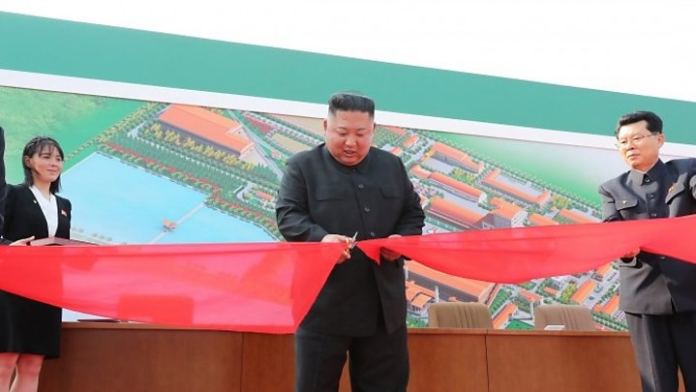
By Maler Suresh
After nearly three weeks of speculation on North Korean leader Kim Jong Un’s whereabouts, he finally reappeared on Saturday May 2nd. In his absence, several rumours and theories flew around regarding Kim’s health. Many even thought him to be in critical condition, or even dead. Others believed he was self-isolating to avoid the coronavirus (although North Korean reports state their country to be virus free.) Kim has disappeared before and for longer periods of time. In September 2014, he went missing for 40 days. When he reappeared with a cane, South Korean intelligence reported that he probably had an ankle operation, though North Korean media did not explain where he had been.
This instance of his disappearance was more striking due to the fact that he missed April 15, his grandfather’s birthday. Also known as the “Day of the Sun,” April 15 marks one of the most important North Korean political holidays because Kim Il-sung founded the North Korean state. Kim Jong Un usually visits his grandfather’s mausoleum on this day, and he has never previously missed this event. His absence caused claims to surface about Kim’s ill-health. In the Daily NK, a newspaper run by North Korean defectors, an anonymous source said that they understood he had been struggling with cardiovascular problems since last August “but it worsened after repeated visits to Mount Paektu”.
The issue was blown up based on the reporting from this single source, leading to headlines that the North Korean dictator was in critical condition after heart surgery. President Trump denied any new reports saying that Kim might be gravely ill, saying he had a “very good idea” of the dictator’s health but he could not talk about it. Instead saying,“I hope he’s fine. I do know how he’s doing, relatively speaking. We will see. You will probably be hearing in the not-too-distant future.” US Secretary of State Mike Pompeo appeared to stoke the rumours on 29 April, by saying US officials “hadn’t seen” Mr Kim recently.
Meanwhile, the South Korean government and Chinese intelligence broadcasted their belief that the North Korean leader was alive and well. Then, on Saturday, Kim made a public appearance in Pyongyang, cutting the ribbon of a completed fertilizer plant. Kim Jong Un was supported by North Korean officials, such as his sister, Kim Yo-Jong. Korean Central News Agency (KCNA) reported that people who were attending the event “burst into thunderous cheers of ‘hurrah!’ for the Supreme Leader who is commanding the all-people general march for accomplishing the great cause of prosperity.” President Trump responded to his reappearance, tweeting “I, for one, am glad to see he is back, and well!”
Rumours about the condition of the dictator’s heart are still swirling due to a mark on his wrist that could indicate a needle being used for a cardiovascular procedure, but it is difficult to tell if this is merely an exaggeration based on weeks of previous speculation. In any case, Kim Jong Un’s disappearance at a time of such turmoil (the global pandemic combined with chronic food shortages within North Korea) has sparked questions internationally about the stability of North Korea, and what could happen at the end of Kim Jong Un’s regime.
